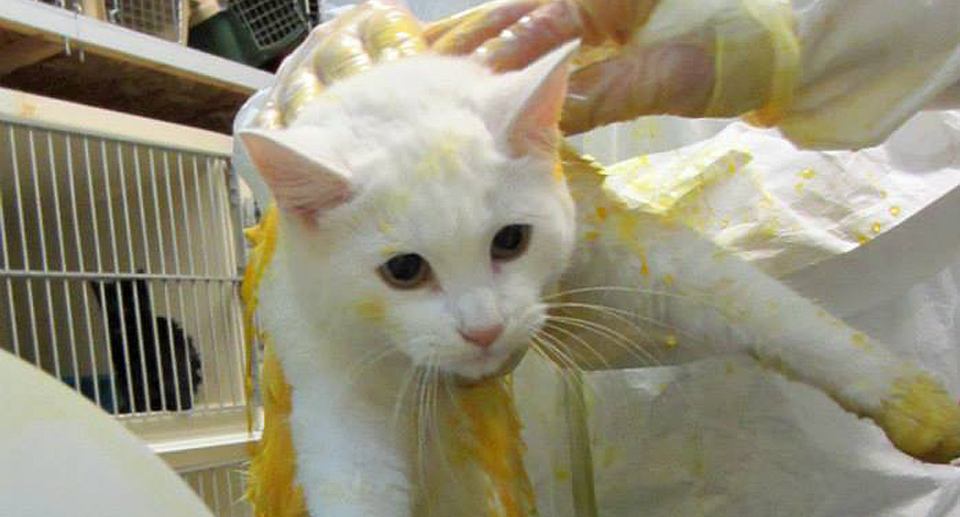
After four months of being closed to most incoming or outgoing animals, the Kamloops SPCA shelter is finally on the brink of reopening its doors.
A bad bout of ringworm — a highly contagious fungal infection, not an actual worm — hit the shelter in early November after infected puppies and kittens from the same home were taken in.
The building is not suited for its use as a shelter; the ventilation system doesn’t allow for proper quarantine to prevent the spread of disease, the space is inadequate and it’s all old and outdated.
That setting doesn’t help when it comes to dealing with something like upper respiratory or ringworm. In this case, the infection meant repeated sulphur-lime dips for all of the animals.
SOME CATS WIND UP BEING PUT DOWN
Unfortunately, cats are not as compliant as dogs and the repeated baths of the rotten-egg smelling concoction put some felines under stress. In the end, at least six or seven cats were killed/euthanized because they fought too much and posed a threat to the staff who had to dip them.
I asked the shelter’s animal-care attendant Angela Henshaw why they didn’t just sedate the cats. People do that for their pets to settle them for long plane rides, and surely the shelter could do that for these cats to get them through an outbreak of something that’s treatable and not fatal.
Apparently not. Henshaw said they aren’t allowed to just give medications out. A vet is needed. And medications can be expensive.
The SPCA gets a discount from local vets — oddly enough, they get a better deal than some other rescue groups even though they have a bigger fundraising engine than any other B.C. animal agency. And they are probably saving some money during the shelter’s closure.
But surely a veterinarian was needed to euthanize these animals who, other than requiring an unappealing treatment, were healthy and adoptable. We’re not talking about feral cats here, just animals who were a big challenge to handle because they lashed out with teeth and claws. Not to minimize how difficult that can be — cats are good fighters.
How many animals have been dumped or worse during the four-month closure? No one knows.
The SPCA has been referring people to the Kamloops and District Humane Society, a small group that has no paid staff and no shelter. It runs purely through volunteer efforts and a foster-home network.
The KDHS is also full most of the time and it has a fraction of the SPCA’s resources.
THAT 'GOOD HOME' MIGHT NOT BE SO GOOD
That leaves people with advertising to find homes themselves, many through those “free to good home” ads. I don’t know anyone — good pet owner or bad — who would say they wouldn’t provide a good home. But some of them don’t.
The other options are to dump the animals to fend for themselves, try other rescue agencies in the region, take dogs to the City pound if there’s space, or have their pet euthanized at a vet clinic (or worse, kill the animal themselves, which some have done). Even when the SPCA shelter is open and accepting animals, it can take several weeks before new cats or dogs are admitted.
The shelter doesn’t take as many cats as it used to, citing the need for animals to have more space so disease doesn’t spread and so the felines are kept in more spacious conditions.
Really, what’s needed is a new shelter. For more than 20 years, that need has been known, with the space often overcrowded and the ventilation system spreading disease.
The SPCA took a positive step by opening up the spay and neuter clinic in Kamloops — a much-needed service that’s proving to be in so much demand it’s always busy.
But the shelter situation isn’t helping animals, it’s hurting them. The SPCA now touts itself as a no-kill shelter, but healthy animals are still dying under its care. I don’t know what the statistics are (I’ve tried a few times in the past and it seems to take a long time for head office to compile them, so long I’ve given up), but the numbers won’t be zero.
And how many animals died as a result of this closure won’t be counted, either.
It’s time for the SPCA to start a campaign for a new Kamloops shelter — one that won’t be vulnerable to disease outbreaks and one that will be adequate for a much larger proportion of homeless animals than the current one.
The society was quick to publicize the plight of some dogs and horses seized from a Clearwater home and put out a call for money to pay for treatment and care. It needs to do the same to build a space that will save lives, not shut them out because of something like ringworm.
